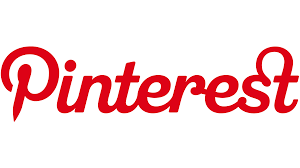How to Leverage Pinterest for Business Growth and Brand Awareness
Pinterest is more than a platform for inspiration—it’s a powerful tool for driving business growth and increasing brand awareness. With over 450 million active users, many of whom use Pinterest to plan purchases and discover new products, the platform offers businesses unique opportunities to connect with their target audience. Here’s how to effectively leverage Pinterest for your business:
1. Understand Pinterest’s Role in Your Marketing Strategy
- Visual Discovery Engine: Unlike traditional social platforms, Pinterest functions as a search engine for visual content, helping users find ideas and products.
- Purchase Intent: Many users visit Pinterest with the intention of planning or making purchases, making it ideal for showcasing products and services.
- Long-Term Content Lifecycle: Pins remain discoverable for months or even years, providing ongoing visibility compared to the fleeting nature of posts on platforms like Instagram or Twitter.
2. Set Up a Pinterest Business Account
- Benefits of a Business Account: Access to analytics, advertising tools, and Rich Pins to enhance your content.
- Verification: Verify your website to establish credibility and unlock additional features like audience insights.
- Profile Optimization:
- Use your logo or a professional image as your profile picture.
- Write a keyword-rich bio that clearly explains your business and value proposition.
- Add links to your website and other social platforms.
3. Create a Content Strategy Aligned with Your Goals
A. Define Your Goals
- Brand Awareness: Share visually compelling pins that communicate your brand’s story.
- Traffic Generation: Link pins to your website, blog, or product pages.
- Lead Generation: Use Idea Pins and call-to-actions (CTAs) to collect emails or encourage sign-ups.
B. Identify Your Target Audience
- Research Pinterest demographics to understand your audience’s preferences.
- Explore relevant subcategories and trending topics on Pinterest to align your content.
C. Develop Content Themes
- Focus on topics that resonate with your audience and align with your offerings (e.g., DIY projects, recipes, travel tips).
- Create seasonal or event-based content to capitalize on trending searches.
4. Optimize Your Pins for Maximum Impact
A. Design High-Quality Visuals
- Use vertical images with a 2:3 aspect ratio for better visibility.
- Add text overlays to make your message clear and actionable.
- Incorporate your branding, such as logos or consistent color schemes.
B. Use Keywords Strategically
- Include relevant keywords in your pin titles, descriptions, and image alt text.
- Research trending keywords using Pinterest’s search bar and tools like Pinterest Trends.
C. Add CTAs
- Encourage users to click through to your website with clear CTAs like “Learn More,” “Shop Now,” or “Get the Recipe.”
D. Enable Rich Pins
- Provide additional context, such as product details, pricing, or article summaries, to make your pins more engaging.
5. Organize and Optimize Your Boards
- Create Themed Boards: Group related pins into well-organized boards with descriptive titles and keywords.
- Use Board Covers: Add custom covers to maintain a cohesive, professional aesthetic.
- Curate Content: Pin a mix of your content and relevant third-party content to build trust and value.
6. Leverage Idea Pins
- What Are Idea Pins? Multi-page, story-like pins that showcase tutorials, behind-the-scenes content, or step-by-step guides.
- How to Use Them: Share educational or inspirational content to engage your audience and build brand loyalty.
- Tip: Add stickers, music, and interactive features to make your Idea Pins more engaging.
7. Utilize Pinterest Ads
- Promoted Pins: Boost visibility for specific pins to reach a larger audience.
- Targeting Options: Use demographic, interest, or keyword-based targeting to reach your ideal customers.
- Ad Formats:
- Standard Pins: Great for promoting individual products or blog posts.
- Video Pins: Ideal for storytelling or demonstrating products.
- Shopping Ads: Highlight products with direct links to purchase pages.
8. Monitor Performance with Analytics
- Track Key Metrics:
- Impressions: How often your pins appear in searches or feeds.
- Saves: How often users save your pins to their boards.
- Clicks: How many users click through to your website or landing page.
- Adjust Your Strategy: Use analytics to identify what content performs best and refine your approach.
9. Engage with the Pinterest Community
- Follow Relevant Accounts: Build connections with other creators and brands in your niche.
- Respond to Comments: Engage with users who interact with your pins to foster relationships.
- Collaborate: Partner with influencers or creators to reach new audiences and boost credibility.
10. Integrate Pinterest with Your Marketing Ecosystem
- Embed Pins on Your Website: Use Pinterest widgets to encourage visitors to explore your boards.
- Promote Pins on Other Platforms: Share your Pinterest content on Facebook, Instagram, or email newsletters.
- Cross-Promote Products: Use Pinterest to complement campaigns running on other channels.
Case Studies of Business Growth on Pinterest
- Etsy Sellers: Many Etsy shops use Pinterest to showcase handmade goods, driving significant traffic and sales.
- Home Depot: Through DIY tutorials and project inspiration, Home Depot engages customers and drives in-store and online sales.
- Tasty by BuzzFeed: Tasty’s recipe pins consistently drive traffic to their website while enhancing brand recognition.
Final Thoughts
Pinterest is a versatile platform for building brand awareness, driving traffic, and growing your business. By creating visually appealing content, engaging with your audience, and leveraging Pinterest’s unique features, you can establish a strong presence on the platform and achieve your business goals. With a strategic approach and consistent effort, Pinterest can become a cornerstone of your marketing strategy.









